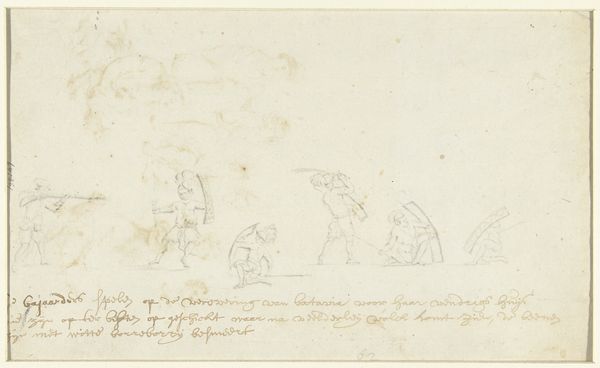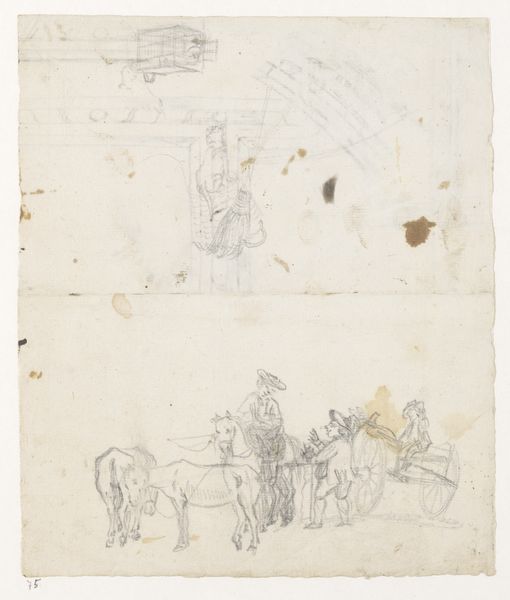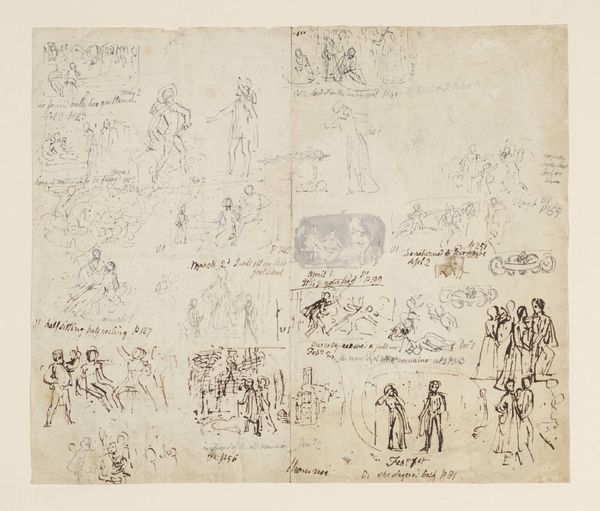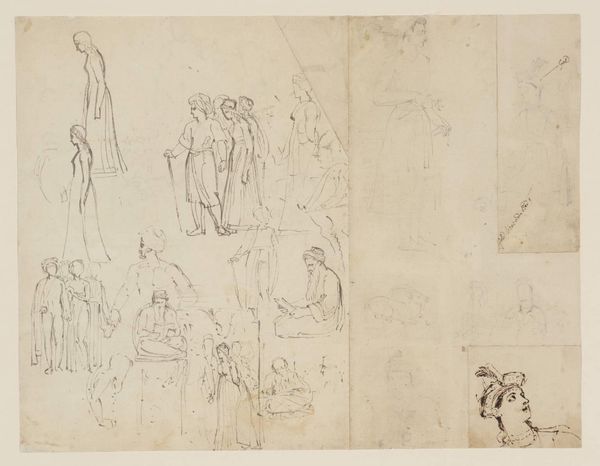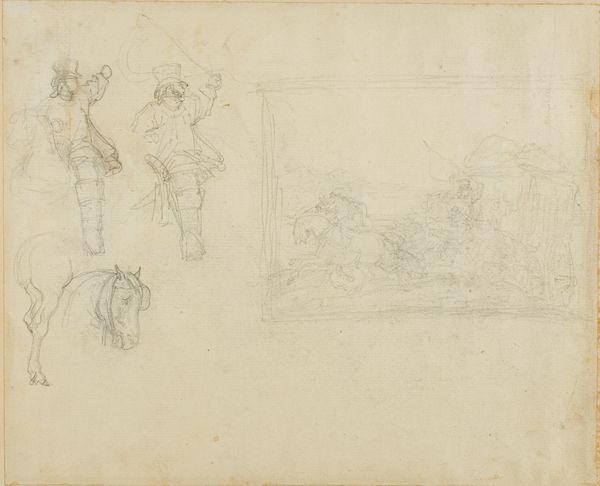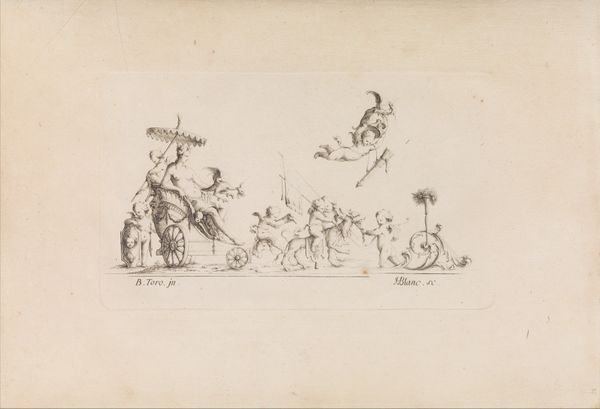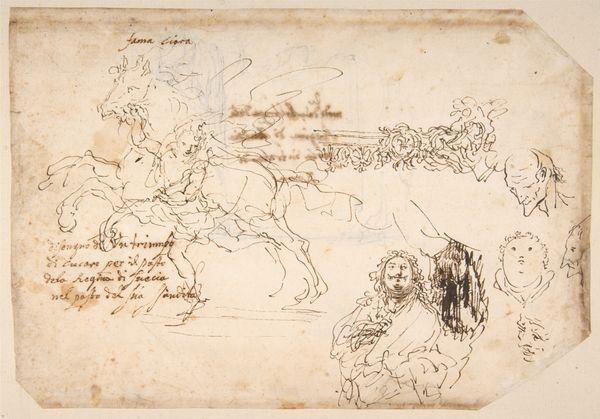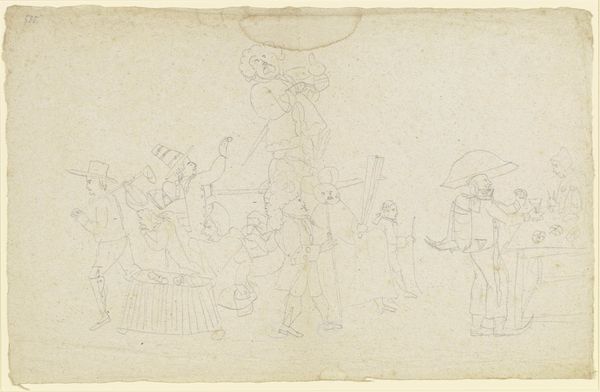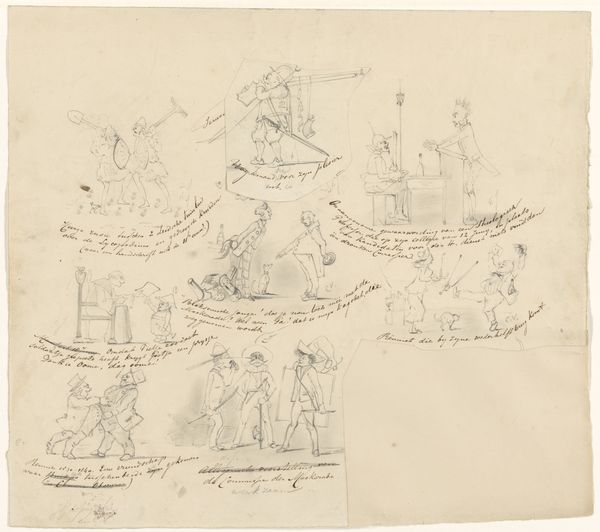
Study for the The Dancing Lesson, part 2: The Minuet c. 1835
0:00
0:00
drawing, print, paper, ink, graphite, pen
#
drawing
#
narrative-art
# print
#
paper
#
ink
#
graphite
#
pen
#
genre-painting
#
history-painting
#
miniature
Dimensions: 228 × 339 mm
Copyright: Public Domain
Curator: This drawing is titled "Study for the Dancing Lesson, part 2: The Minuet," created circa 1835 by George Cruikshank. It employs pen, graphite, and ink on paper, and is currently held at the Art Institute of Chicago. Editor: The overall impression is wonderfully spontaneous. The dynamic energy almost bursts off the page with its flurry of lines. What strikes you first? Curator: I'm immediately drawn to the framing within the drawing. Cruikshank seems to be exploring various compositional possibilities, confining the central scene as if staging it, which creates a self-referential comment on the constructed nature of performance. Editor: I see how you perceive a self-referential stage, the theatrical curtain… reminds us that this ‘dancing lesson’ is also about social posturing and symbolic gesture. Minuets, in their time, encapsulated the very essence of social performance, a dance that dictated rigid structures of courtship, decorum, and power. Curator: Precisely, it seems he is keen on exploring how the performance shapes and defines those figures and how that might then define the scene within a space itself. Look at the almost skeletal figure on the left with a violin, his stance—it’s all angles, as if movement has been distilled into its most economic visual form. Editor: His portrayal isn’t only about aesthetics—the gaunt figure could be read as a grim reminder of the social disparities inherent in the era's class structure, perhaps commenting on the almost dehumanizing expectations placed on instructors. And those faces to the side - like grotesque masks or gargoyles almost. Curator: And they lack the clear refinement and clean precision of figures within what we will call the “stage,” offering us a look at two styles, two worlds in conflict…perhaps it signifies what that world lacks, in juxtaposition to those masks, they become signifiers of honesty in direct relation with the "stage" that almost necessitates inauthenticity. Editor: An interesting take, thinking about masks within a mask. What begins as a dance lesson broadens, becoming something that mirrors the constructs within which these characters and artist exist. What do you think of it as a work? Curator: Ultimately, the beauty of it lies in its tentative nature. We glimpse process, indecision. It offers the charm of not yet being solidified and the beauty in raw artistic thought. Editor: Indeed, witnessing a great mind thinking through its craft—laying bare society’s underpinnings—is an incredibly fulfilling experience.
Comments
No comments
Be the first to comment and join the conversation on the ultimate creative platform.

